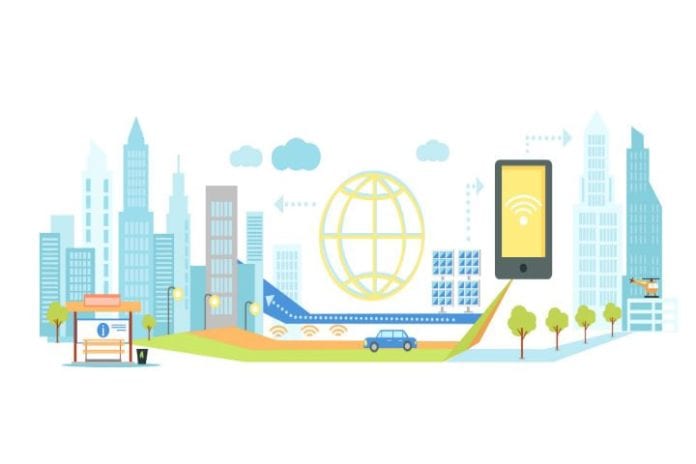Learn how JMA Wireless is hiding equipment in plain site to speed up adoption of smart city and IoT solutions
In 2015, 54% of the global population lived in cities, but, according to projections from the United Nations, that figure will dramatically increase–up to 70% of the population by 2050–as a long-running wave of urbanization continues to bring people from rural areas into the city. This means that already strained urban infrastructure will have to be foundationally rebuilt to accommodate all the new residents. A clear answer to ensuring sustainability and quality-of-life in urban areas today, and tomorrow, is enablement of smart cities solution, which can run the gamut from connected video cameras and traffic sensors to public Wi-Fi hotspots and kiosks to access municipal services.
And, underlying all of the various smart city projects powered by the Internet of Things, is network infrastructure. To address this booming space, Liverpool, N.Y.-based JMA Wireless has partnered with Bigbelly, which manufactures solar-powered waste and recycling stations that compact trash and upload data regarding level of fullness into the cloud. This solution lets cities and towns cut down on collection costs by never rolling trucks unless a can is completely full; Bigbelly also creates value for residents by reducing waste overflow, pests and altogether helping maintain a clean common area.
During an interview at Mobile World Congress 2017 in Barcelona, Spain, Todd Landry, JMA Wireless corporate vice president, product and marketing, explained to RCR Wireless News how these smart waste and recycling stations fit into the network infrastructure space.
“In cities everywhere we’re deploying waste and recycle management stations though a partner called Bigbelly. As a result, this ends up being a location where we can extend that site to allow other equipment to be deployed right there at that location. Where there’s waste and recycling, there’s densities of people. That also means there’s densities of mobile devices. Within a cabinet like this, we have the ability to provide a fair amount of equipment space so we can load equipment in there and deliver multi-carrier small cell solutions all concealed right on the streetscape. It gives us enough room to add other devices. This might be a location for Wi-Fi, it might be a location for IoT, audio sensors, camera and video sensors, a range of different solutions that are empowering theses smart urban environments.”
Landry, in a separate interview at the Enterprise IoT Summit, continued, explaining the value of waste and recycling stations as a platform for broader IoT enablement. “A range of different technologies can be located in street furniture at intervals on the city streets. In the most basic sense, I’ve got cellular amplifiers…they can drive local antennas on a mast right off the Bigbelly, or they can micro-trench over to a light post and have cellular off of there. It also becomes a place for a range of different sensors, whether they’re gunshot sensors, camera-type devices, beacon-type devices for location, or even advertising. That was really a part of our initiative that we’ve been starting for smart urban solutions.”
JMA Wireless and Bigbelly will begin deploying in major U.S. cities later this year as part of a pilot project, Landry said. “Everything we deploy will be IoT ready in terms of things like LTE Cat-M1 or narrowband-IoT.”
Click here to learn more about JMA Wireless and its broad portfolio of solutions.

